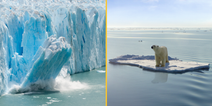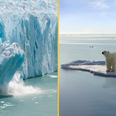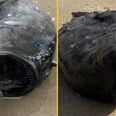The Nepalese climbers made history back in January by climbing K2 in winter. Now they’re tidying up after people too
A group of Nepalese climbers who ascended the K2 mount in the Himalayas earlier this year – the same set of summits as Everest and the second-highest in the world – have also been doing their bit to keep the majestic mountain range looking in tip-top shape.
Bally (a Swish fashion company) set up the ‘Bally Peak Outlook’ initiative back in 2019, which aims to clean up Nepal’s eight, iconic mountains, which have been littered with refuse for many years. Everything from empty oxygen canisters (used for the altitude) to the abandoned tents and human waste left at the camps have been collecting at the base.
The climbers collected around two tons in their first two ventures to Everest between May and June 2019, but their efforts haven’t stopped there. This week, Bally has confirmed that after the team’s latest expedition – which was delayed until September 2020 due to Covid-19 – it has been estimated that a further 2.2 tons of rubbish have been collected.
https://twitter.com/Bally/status/1376533417270112258?ref_src=twsrc%5Etfw%7Ctwcamp%5Etweetembed%7Ctwterm%5E1376533417270112258%7Ctwgr%5E%7Ctwcon%5Es1_c10&ref_url=https%3A%2F%2Fwww.unilad.co.uk%2Fnews%2Fnepalese-climbers-remove-2-2-tons-of-rubbish-from-everest-while-tourists-away%2F
As you can see, over the course of 47 days and with the help of 12 incredible individuals, the base camps of another four mountains have been cleaned up. It is worth noting that all of these mountains measure at over 8,000 metres tall – this is no ordinary litter picking. And they’re no way near done yet.
The next phase of clean-up is due to start around the end of the 2021 climbing season (April-May, even up to mid-June) and the team will look to conduct a clean-up of the remaining four mountains: Kanchenjunga, Dhaulagiri, Manaslu and Annapurna. However, the work will never be done.
This next expedition will also include a third clean-up at Everest, which threatens the most environmental damage and pollution, due to its popularity and subsequent size of its base camp. Around 800 people climb Everest every year and given the difficulty of the task, not as much attention is paid to cleaning up after yourself as there should.
Hopefully, the team’s efforts to reduce the footprint left by decades of climbers have put a significant dent in the overall mass and future ascents will be conducted with much more environmental awareness.
The expedition’s leader, Dawa Steven Sherpa, told the Telegraph he was blown away by “The strength of our human footprint. The vodka bottles that we found had not been accidentally dropped, but intentionally buried in a hole in the mountain.”
He went on to say, though, that the conditions were like “nature reminding us that it only takes one year to remove the trace of human trails. Being reunited with nature, with no tourists around us, it felt like a pilgrimage. It was nature in its purest state”.
Regardless of however temporary their impact may turn out to be, it is some achievement and they should be applauded for going to such great lengths in the name of conservation and environmental awareness. Well played, lads.



















































